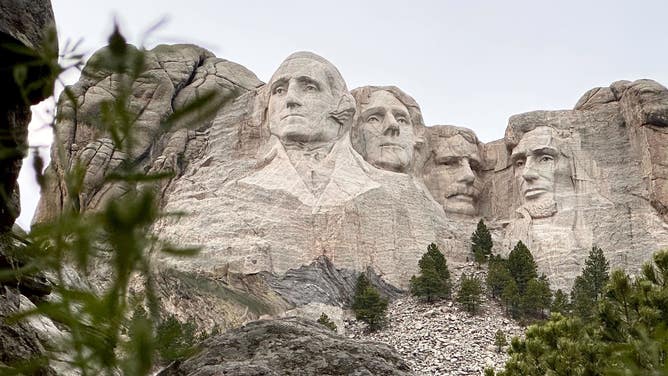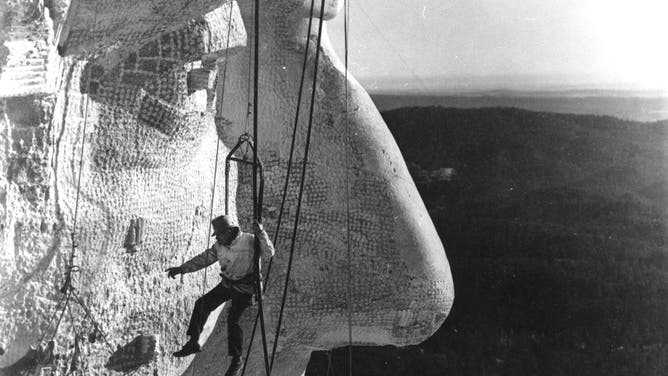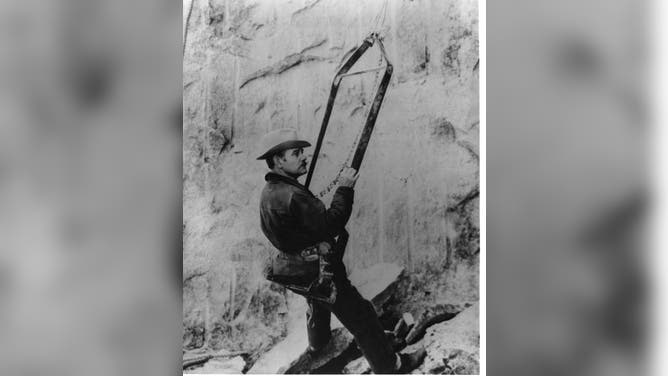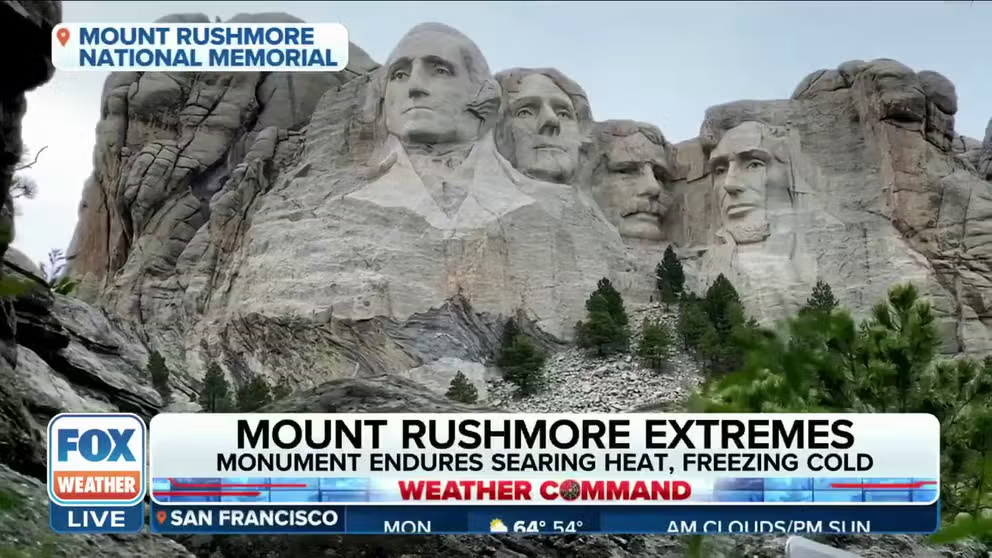How Mount Rushmore stands in the face of volatile weather
From its original design to updates made along the way, a number of engineering feats were done to help the national memorial withstand the elements for as long as Mother Nature allows.
Maintaining Mount Rushmore amid wild weather
FOX Weather correspondent Robert Ray travels to Mount Rushmore to learn about how the nation's national treasure weathers tough weather all year long.
Mount Rushmore in South Dakota has stood the test of time, weathering storms and a variety of extreme conditions for nearly 100 years.
From its original design to updates made along the way, a number of engineering feats were done to help the national memorial withstand the elements for as long as Mother Nature allows.
For example, the location of the granite masterpiece was chosen in an attempt to help keep it dry. The memorial was carved on the eastern face of the mountain, so that the morning sun would melt away moisture.

Mount Rushmore.
(Robert Ray / FOX Weather)
Another measure taken to preserve the memorial is a bit more high-tech.
The sculpture contains 22 rock blocks, four of which have strain gauges that are connected to a computer using fiber optics. Those gauges monitor any movement or expansion of the mountain and its rocks, which is caused by extreme temperature swings.
TRAVEL TO MOUNT RUSHMORE NATIONAL MEMORIAL
Cold temperatures cause the rocks to contract, while warmer temperatures cause them to expand. These fluctuations can cause a number of cracks to form, Blaine Kortemeyer of the Mount Rushmore National Memorial said to FOX Weather's Robert Ray.
To preserve the structural integrity of the memorial, Kortemeyer said many of those cracks are sealed up with a silicon-based caulking to prevent water from entering the cracks. However, cracks in the vertical format are left alone, so that any water that enters – which is capable of eroding and even breaking rocks apart – is able to come out.
Scientists estimate that, with the rate of erosion and with human care, the basic shape of the president's heads might last up to 7 million years.
The history of Mount Rushmore National Memorial

The face of Abraham Lincoln under construction on Mount Rushmore in 1936 with Gutzon Borglum monitoring the work.
(National Park Service / FOX Weather)
The idea of carving images on the Black Hills of western South Dakota began in 1923, when it was suggested by South Dakota state historian Doane Robinson. According to the National Park Service, Robinson would become known as the "Father of Mount Rushmore."
In 1927, the state of South Dakota commissioned sculptor Gutzon Borglum to carve faces into the granite rock face of what would become the most famous mountain in the Black Hills: Mount Rushmore.
Borglum suggested that the faces should be of George Washington, Thomas Jefferson, Theodore Roosevelt and Abraham Lincoln. Borglum believed that the four presidents symbolized what was, at the time, the 150-year history of the United States.

Gutzon Borglum, sculptor of Mount Rushmore, is shown here in a Bosun's chair inspecting the work on the memorial. Workers used the Bosun's chairs, suspended from above, while they drilled with jackhammers into the granite.
(National Park Service / FOX Weather)
According to Encyclopedia Britannica, Borglum believed that Washington represented the country’s founding, Jefferson represented its growth across North America, Roosevelt represented the country’s development at home and as a power on the world stage, and Lincoln represented the country's preservation during the Civil War.
Construction on the memorial began on October 4, 1927. According to the NPS, it involved nearly 400 workers and required the use of dynamite to carve out 90 percent of the mountain. By the time the memorial was completed 14 years later on October 31, 1941, no deaths had occurred.



